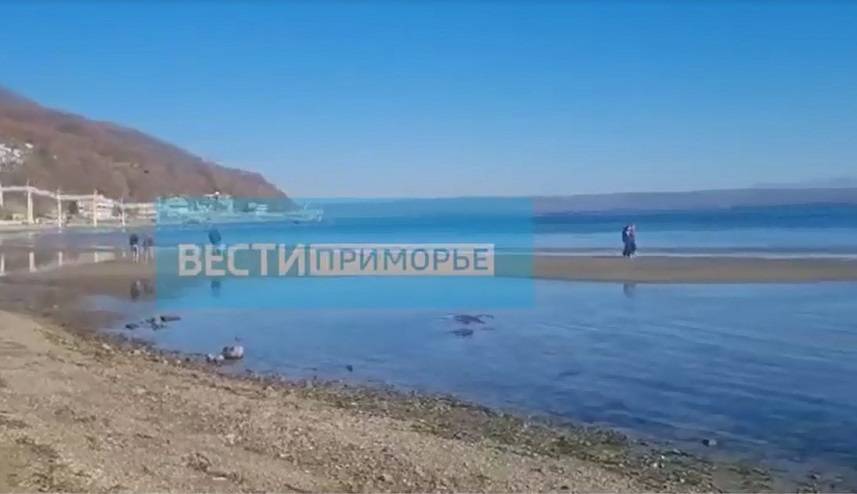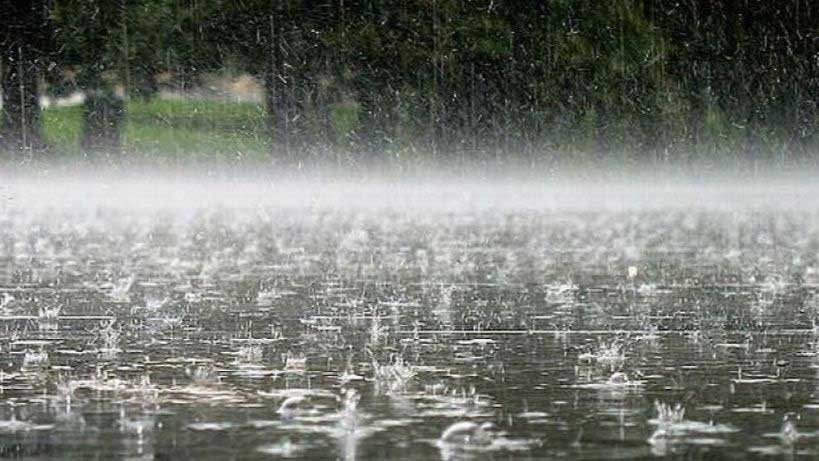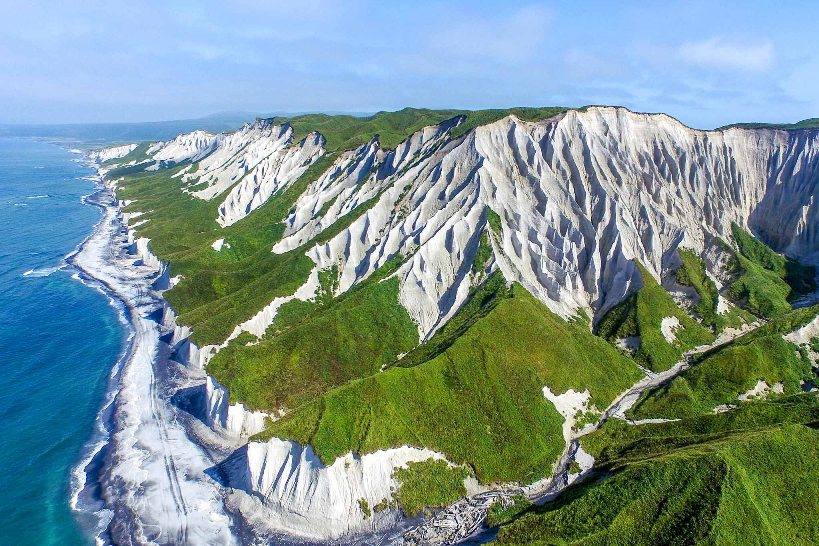Residents of Primorye noticed the strongest low tide in recent times on October 20, which is especially visible in closed bays and gulfs. An earthquake with a magnitude of 4.4 was recorded near Nakhodka, the earthquake occurred on October 21. Heavy and prolonged precipitation can intensify earthquakes.
On October 20, residents of Primorye noticed the strongest low tide in recent times, which is especially visible in closed bays and gulfs, Vesti:Primorye reports. Eyewitnesses report that the water has receded from the shore by several dozen meters, and where the water is usually waist-deep, there are now islands of land.
Primorye residents on the Internet suggest that this happens before a tsunami. Earlier, meteorological services noted that a powerful cyclone was heading to Primorye; on October 22 and 23, warning No. 1 was announced in the region due to bad weather.

An earthquake with a magnitude of 4.4 was recorded near Nakhodka, the earthquake occurred on October 21 at 23:59:15 (UTC+10:00) in the Sea of Japan. The distance from the epicenter to Nakhodka is 127.7 kilometers, 113 km from the village of Kozmino – at a depth of 473 km. As reported by Primhydromet, the threat of a tsunami in Primorye was not declared.
Heavy and prolonged rainfall can intensify earthquakes. Scientists, assessing the risks associated with climate change, pay attention to the melting of glaciers, rising sea levels, the growth of extreme events such as droughts, hurricanes, floods, etc. And recently it turned out that the ongoing changes can have very unexpected indirect consequences: it is possible that heavy precipitation “triggers” an earthquake! However, it should be noted that the connection between weather conditions and seismic activity is only being studied and requires further research. Forecasting seismic activity based on weather conditions remains a difficult task.
A team of Japanese and Western scientists analyzed seismic activity data on Japan’s Noto Peninsula for 11 years. It was found that earthquakes were not linked before 2020, but since the end of that year, the tremors have become more intense and clustered in time. The earthquakes have been going on for four years, although the site is far from active seismic zones. Unlike typical interplate earthquakes in a subduction zone, the “shaking” of the peninsula’s inner crust occurs mainly at relatively shallow depths (about 10-15 km) and is seasonal.

The analysis suggested that the main impact on the crust is not the tension between the plates, but the pressure of the liquid that fell in extreme volumes. That is, heavy and prolonged precipitation was partly to blame. It increases the pressure of the liquid in the cracks of the Earth on the bedrock. To understand the mechanism of the process, a hydromechanical three-dimensional model of the Noto Peninsula was developed. As a result, specialists were able to track changes in excess pressure in this area before and during the earthquake.
When the heavy snowfall data was introduced into the model, it became clear how precipitation affects pore pressure—the force that fluids (the liquid or gaseous components of magma or gas-rich solutions circulating deep in the Earth) exert on rocks in the Earth’s cracks and faults. This means that the Noto earthquakes can be partly explained by seasonal extreme precipitation. And the primary trigger that sets off the tremors is certainly at depth.
According to the researchers, in the future, due to global warming, the influence of climate on earthquakes will become increasingly noticeable.
Seismic activity continues in the Far East. On October 24, an earthquake with a magnitude of 6.2 was registered on the night of Thursday in the Pacific Ocean off the coast of the Northern Kuril Islands, specialists from the Yuzhno-Sakhalinsk seismic station told RIA Novosti. The epicenter of the tremors was in the Pacific Ocean 155 kilometers south of the city of Severo-Kurilsk on Paramushir Island, the source was located at a depth of 63 kilometers.
According to seismologists, a magnitude 3 earthquake was felt in Severo-Kurilsk. There were no casualties or damage, and no tsunami alert was issued. The US Geological Survey also estimated the seismic event at a magnitude of 6.2. According to its data, the tremors were recorded at 17:38 Moscow time on Wednesday; in Severo-Kurilsk it was already 1:38 Thursday.

On August 30, an earthquake with a magnitude of 6.1 and a tremor force of up to 5 points occurred off the coast of Kamchatka, RIA Novosti was told in the Kamchatka branch of the Geophysical Service of the Russian Academy of Sciences. According to preliminary data, at 16:24 local time (7:24 Moscow time), an earthquake with a magnitude of 6.1 occurred in the Pacific Ocean. In Petropavlovsk-Kamchatsky, Yelizovo, Vilyuchinsk and a number of other settlements in the Yelizovsky district, the tremor was felt with a force of up to five points. Preliminary, the distance from the epicenter to Petropavlovsk-Kamchatsky was 123 kilometers, the depth of the source was about 27 kilometers under the seabed.
According to a RIA Novosti correspondent, hanging objects were swinging in the apartment, and glass objects were clinking in the closet. No tsunami threat was announced. According to preliminary data, there were no casualties or damage. The US Geological Survey estimated this seismic event at a magnitude of 6.0.
On August 13, an earthquake with a magnitude of 4.6 was registered in the Pacific Ocean off the coast of the Kuril Islands, RIA Novosti reports, citing information from the Yuzhno-Sakhalinsk seismic station. The earthquake with a magnitude of 4.6 occurred early in the morning of August 13, at 5:47 a.m. local time (in Moscow it was still 9:47 p.m. on Tuesday). The epicenter was located 92 kilometers south of the village of Malokurilskoye on the Kuril Island of Shikotan. The epicenter was at a depth of 41 kilometers.
According to seismologists, the earthquake could have been felt on Shikotan with a magnitude of up to 3 points, on the neighboring island of Kunashir – up to 2 points. No tsunami alert was issued. The US Geological Survey estimated this seismic event at a magnitude of 4.5.




